It seems the Royal Bank of Canada ((RBC or Royal Bank) wants to weigh in and influence what is to come with regard to what new technologies will bring us and how they will affect our working lives. (I will be offering my critiques of the whole thing.)
Launch yourself into the future (if you’re a youth)
“I’m not planning on being replaced by a robot.” That’s the first line of text you’ll see if you go to the Royal Bank of Canada’s new Future Launch web space and latest marketing campaign and investment.
This whole endeavour is aimed at ‘youth’ and represents a $500M investment. Of course, that money will be invested over a 10-year period which works out to $50M per year and doesn’t seem quite so munificent given how much money Canadian banks make (from a March 1, 2017 article by Don Pittis for the Canadian Broadcasting Corporation [CBC] news website),
…
Yesterday [February 28, 2017] the Bank of Montreal [BMO] said it had made about $1.5 billion in three months.
That may be hard to put in context until you hear that it is an increase in profit of nearly 40 per cent from the same period last year and dramatically higher than stock watchers had been expecting.
Not all the banks have done as well as BMO this time. The Royal Bank’s profits were up 24 per cent at $3 billion. [emphasis mine] CIBC [Canadian Imperial Bank of Commerce] profits were up 13 per cent. TD [Toronto Dominion] releases its numbers tomorrow.
…
Those numbers would put the RBC on track to a profit of roughly $12B n 2017. This means $500M represents approximately 4.5% of a single year’s profits which will be disbursed over a 10 year period which makes the investment work out to approximately .45% or less than 1/2 of one percent. Paradoxically, it’s a lot of money and it’s not that much money.
Advertising awareness
First, there was some advertising (in Vancouver at least),

[downloaded from http://flinflononline.com/local-news/356505]
You’ll notice she has what could be described as a ‘halo’. Is she an angel or, perhaps, she’s an RBC angel? After all, yellow and gold are closely associated as colours and RBC sports a partially yellow logo. As well, the model is wearing a blue denim jacket, RBC’s other logo colour.
Her ‘halo’ is intact but those bands of colour bend a bit and could be described as ‘rainbow-like’ bringing to mind ‘pots of gold’ at the end of the rainbow. Free association is great fun and allows people to ascribe multiple and/or overlapping ideas and stories to the advertising. For example, people who might not approve of imagery that hearkens to religious art might have an easier time with rainbows and pots of gold. At any rate, none of the elements in images/ads are likely to be happy accidents or coincidence. They are intended to evoke certain associations, e.g., anyone associated with RBC will be blessed with riches.
The timing is deliberate, too, just before Easter 2018 (April 1), suggesting to some us, that even when the robots arrive destroying the past, youth will rise up (resurrection) for a new future. Or, if you prefer, Passover and its attendant themes of being spared and moving to the Promised Land.
Enough with the semiotic analysis and onto campaign details.
Humans Wanted: an RBC report
It seems the precursor to Future Launch, is an RBC report, ‘Humans Wanted’, which itself is the outcome of still earlier work such as this Brookfield Institute for Innovation + Entrepreneurship (BII+E) report, Future-proof: Preparing young Canadians for the future of work, March 2017 (authors: Creig Lamb and Sarah Doyle), which features a quote from RBC’s President and CEO (Chief Executive Officer) David McKay,
“Canada’s future prosperity and success will rely on us harnessing the innovation of our entire talent pool. A huge part of our success will depend on how well we integrate this next generation of Canadians into the workforce. Their confidence, optimism and inspiration could be the key to helping us reimagine traditional business models, products and ways of working.” David McKay, President and CEO, RBC
There are a number of major trends that have the potential to shape the future of work, from climate change and resource scarcity to demographic shifts resulting from an aging population and immigration. This report focuses on the need to prepare Canada’s youth for a future where a great number of jobs will be rapidly created, altered or made obsolete by technology.
Successive waves of technological advancements have rocked global economies for centuries, reconfiguring the labour force and giving rise to new economic opportunities with each wave. Modern advances, including artificial intelligence and robotics, once again have the potential to transform the economy, perhaps more rapidly and more dramatically than ever before. As past pillars of Canada’s economic growth become less reliable, harnessing technology and innovation will become increasingly important in driving productivity and growth. 1, 2, 3
… (p. 2 print; p. 4 PDF)
The Brookfield Institute (at Ryerson University in Toronto, Ontario, Canada) report is worth reading if for no other reason than its Endnotes. Unlike the RBC materials, you can find the source for the information in the Brookfield report.
After Brookfield, there was the RBC Future Launch Youth Forums 2017: What We Learned document (October 13, 2017 according to ‘View Page Info’),
In this rapidly changing world, there’s a new reality when it comes to work. A degree or diploma no longer guarantees a job, and some of the positions, skills and trades of today won’t exist – or be relevant – in the future.
Through an unprecedented 10-year, $500 million commitment, RBC Future LaunchTM is focused on driving real change and preparing today’s young people for the future world of work, helping them access the skills, job experience and networks that will enable their success.
At the beginning of this 10-year journey RBC® wanted to go beyond research and expert reports to better understand the regional issues facing youth across Canada and to hear directly from young people and organizations that work with them. From November 2016 to May 2017, the RBC Future Launch team held 15 youth forums across the country, bringing together over 430 partners, including young people, to uncover ideas and talk through solutions to address the workforce gaps Canada’s youth face today.
…
Finally, a March 26, 2018 RBC news release announces the RBC report: ‘Humans Wanted – How Canadian youth can thrive in the age of disruption’,
Automation to impact at least 50% of Canadian jobs in the next decade: RBC research
Human intelligence and intuition critical for young people and jobs of the future
- Being ‘human’ will ensure resiliency in an era of disruption and artificial intelligence
- Skills mobility – the ability to move from one job to another – will become a new competitive advantage
TORONTO, March 26, 2018 – A new RBC research paper, Humans Wanted – How Canadian youth can thrive in the age of disruption, has revealed that 50% of Canadian jobs will be disrupted by automation in the next 10 years.
As a result of this disruption, Canada’s Gen Mobile – young people who are currently transitioning from education to employment – are unprepared for the rapidly changing workplace. With 4 million Canadian youth entering the workforce over the next decade, and the shift from a jobs economy to a skills economy, the research indicates young people will need a portfolio of “human skills” to remain competitive and resilient in the labour market.
“Canada is at a historic cross-roads – we have the largest generation of young people coming into the workforce at the very same time technology is starting to impact most jobs in the country,” said Dave McKay, President and CEO, RBC. “Canada is on the brink of a skills revolution and we have a responsibility to prepare young people for the opportunities and ambiguities of the future.”
‘There is a changing demand for skills,” said John Stackhouse, Senior Vice-President, RBC. “According to our findings, if employers and the next generation of employees focus on foundational ‘human skills’, they’ll be better able to navigate a new age of career mobility as technology continues to reshape every aspect of the world around us.”
Key Findings:
- Canada’s economy is on target to add 2.4 million jobs over the next four years, virtually all of which will require a different mix of skills.
- A growing demand for “human skills” will grow across all job sectors and include: critical thinking, co-ordination, social perceptiveness, active listening and complex problem solving.
- Rather than a nation of coders, digital literacy – the ability to understand digital items, digital technologies or the Internet fluently – will be necessary for all new jobs.
- Canada’s education system, training programs and labour market initiatives are inadequately designed to help Canadian youth navigate the new skills economy, resulting in roughly half a million 15-29 year olds who are unemployed and another quarter of a million who are working part-time involuntarily.
- Canadian employers are generally not prepared, through hiring, training or retraining, to recruit and develop the skills needed to ensure their organizations remain competitive in the digital economy.
“As digital and machine technology advances, the next generation of Canadians will need to be more adaptive, creative and collaborative, adding and refining skills to keep pace with a world of work undergoing profound change,” said McKay. “Canada’s future prosperity depends on getting a few big things right and that’s why we’ve introduced RBC Future Launch.”
RBC Future Launch is a decade-long commitment to help Canadian youth prepare for the jobs of tomorrow. RBC is committed to acting as a catalyst for change, bringing government, educators, public sector and not-for-profits together to co-create solutions to help young people better prepare for the future of the work through “human skills” development, networking and work experience.
Top recommendations from the report include:
- A national review of post-secondary education programs to assess their focus on “human skills” including global competencies
- A national target of 100% work-integrated learning, to ensure every undergraduate student has the opportunity for an apprenticeship, internship, co-op placement or other meaningful experiential placement
- Standardization of labour market information across all provinces and regions, and a partnership with the private sector to move skills and jobs information to real-time, interactive platforms
- The introduction of a national initiative to help employers measure foundational skills and incorporate them in recruiting, hiring and training practices
Join the conversation with Dave McKay and John Stackhouse on Wednesday, March 28 [2018] at 9:00 a.m. to 10:00 a.m. EDT at RBC Disruptors on Facebook Live.
Click here to read: Humans Wanted – How Canadian youth can thrive in the age of disruption.
About the Report
RBC Economics amassed a database of 300 occupations and drilled into the skills required to perform them now and projected into the future. The study groups the Canadian economy into six major clusters based on skillsets as opposed to traditional classifications and sectors. This cluster model is designed to illustrate the ease of transition between dissimilar jobs as well as the relevance of current skills to jobs of the future.
Six Clusters
Doers: Emphasis on basic skills
Transition: Greenhouse worker to crane operator
High Probability of Disruption
Crafters: Medium technical skills; low in management skills
Transition: Farmer to plumber
Very High Probability of Disruption
Technicians: High in technical skills
Transition: Car mechanic to electrician
Moderate Probability of Disruption
Facilitators: Emphasis on emotional intelligence
Transition: Dental assistant to graphic designer
Moderate Probability of Disruption
Providers: High in Analytical Skills
Transition: Real estate agent to police officer
Low Probability of Disruption
Solvers: Emphasis on management skills and critical thinking
Transition: Mathematician to software engineer
Minimal Probability of Disruption
About RBC
Royal Bank of Canada is a global financial institution with a purpose-driven, principles-led approach to delivering leading performance. Our success comes from the 81,000+ employees who bring our vision, values and strategy to life so we can help our clients thrive and communities prosper. As Canada’s biggest bank, and one of the largest in the world based on market capitalization, we have a diversified business model with a focus on innovation and providing exceptional experiences to our 16 million clients in Canada, the U.S. and 34 other countries. Learn more at rbc.com.
We are proud to support a broad range of community initiatives through donations, community investments and employee volunteer activities. See how at http://www.rbc.com/community-sustainability/.
– 30 –
The report features a lot of bulleted points, airy text (large fonts and lots of space between the lines), inoffensive graphics, and human interest stories illustrating the points made elsewhere in the text.
There is no bibliography or any form of note telling you where to find the sources for the information in the report. The 2.4M jobs mentioned in the news release are also mentioned in the report on p. 16 (PDF) and is credited in the main body of the text to the EDSC. I’m not up-to-date on my abbreviations but I’m pretty sure it does not stand for East Doncaster Secondary College or East Duplin Soccer Club. I’m betting it stands for Employment and Social Development Canada. All that led to visiting the EDSC website and trying (unsuccessfully) to find the report or data sheet used to supply the figures RBC quoted in their report and news release.
Also, I’m not sure who came up with or how they developed the ‘crafters, ‘doers’, ‘technicians’, etc. categories.
Here’s more from p. 2 of their report,
CANADA, WE HAVE A PROBLEM. [emphasis mine] We’re hurtling towards the 2020s with perfect hindsight, not seeing what’s clearly before us. The next generation is entering the workforce at a time of profound economic, social and technological change. We know it. [emphasis mine] Canada’s youth know it. And we’re not doing enough about it.
RBC wants to change the conversation, [emphasis mine] to help Canadian youth own the 2020s — and beyond. RBC Future Launch is our 10-year commitment to that cause, to help young people prepare for and navigate a new world of work that, we believe, will fundamentally reshape Canada. For the better. If we get a few big things right.
This report, based on a year-long research project, is designed to help that conversation. Our team conducted one of the biggest labour force data projects [emphasis mine] in Canada, and crisscrossed the country to speak with students and workers in their early careers, with educators and policymakers, and with employers in every sector.
We discovered a quiet crisis — of recent graduates who are overqualified for the jobs they’re in, of unemployed youth who weren’t trained for the jobs that are out there, and young Canadians everywhere who feel they aren’t ready for the future of work.
…
Sarcasm ahead
There’s nothing like starting your remarks with a paraphrased quote from a US movie about the Apollo 13 spacecraft crisis as in, “Houston, we have a problem.” I’ve always preferred Trudeau (senior) and his comment about ‘keeping our noses out of the nation’s bedrooms’. It’s not applicable but it’s more amusing and a Canadian quote to boot.
So, we know we’re having a crisis which we know about but RBC wants to tell us about it anyway (?) and RBC wants to ‘change the conversation’. OK. So how does presenting the RBC Future Launch change the conversation? Especially in light of the fact, that the conversation has already been held, “a year-long research project … Our team conducted one of the biggest labour force data projects [emphasis mine] in Canada, and crisscrossed the country to speak with students and workers in their early careers, with educators and policymakers, and with employers in every sector.” Is the proposed change something along the lines of ‘Don’t worry, be happy; RBC has six categories (Doers, Crafters, Technicians, Facilitators, Providers, Solvers) for you.’ (Yes, for those who recognized it, I’m referencing I’m referencing Bobby McFerrin’s hit song, Don’t Worry, Be Happy.)
Also, what data did RBC collect and how do they collect it? Could Facebook and other forms of social media have been involved? (My March 29, 2018 posting mentions the latest Facebook data scandal; scroll down about 80% of the way.)
There are the people leading the way and ‘changing the conversation’ as it were and they can’t present logical, coherent points. What kind of conversation could they possibly have with youth (or anyone else for that matter)?
And, if part of the problem is that employers are not planning for the future, how does Future Launch ‘change that part of the conversation’?
RBC Future Launch
Days after the report’s release,there’s the Future Launch announcement in an RBC March 28, 2018 news release,
TORONTO, March 28, 2017 – In an era of unprecedented economic and technological change, RBC is today unveiling its largest-ever commitment to Canada’s future. RBC Future Launch is a 10-year, $500-million initiative to help young people gain access and opportunity to the skills, job experience and career networks needed for the future world of work.
“Tomorrow’s prosperity will depend on today’s young people and their ability to take on a future that’s equally inspiring and unnerving,” said Dave McKay, RBC president and CEO. “We’re sitting at an intersection of history, as a massive generational shift and unprecedented technological revolution come together. And we need to ensure young Canadians are prepared to help take us forward.”
Future Launch is a core part of RBC’s celebration of Canada 150, and is the result of two years of conversations with young Canadians from coast to coast to coast.
“Young people – Canada’s future – have the confidence, optimism and inspiration to reimagine the way our country works,” McKay said. “They just need access to the capabilities and connections to make the 21st century, and their place in it, all it should be.”
Working together with young people, RBC will bring community leaders, industry experts, governments, educators and employers to help design solutions and harness resources for young Canadians to chart a more prosperous and inclusive future.
Over 10 years, RBC Future Launch will invest in areas that help young people learn skills, experience jobs, share knowledge and build resilience. The initiative will address the following critical gaps:
- A lack of relevant experience. Too many young Canadians miss critical early opportunities because they’re stuck in a cycle of “no experience, no job.” According to the consulting firm McKinsey & Co., 83 per cent of educators believe youth are prepared for the workforce, but only 34 per cent of employers and 44 per cent of young people agree. RBC will continue to help educators and employers develop quality work-integrated learning programs to build a more dynamic bridge between school and work.
- A lack of relevant skills. Increasingly, young people entering the workforce require a complex set of technical, entrepreneurial and social skills that cannot be attained solely through a formal education. A 2016 report from the World Economic Forum states that by 2020, more than a third of the desired core skill-sets of most occupations will be different from today — if that job still exists. RBC will help ensure young Canadians gain the skills, from critical thinking to coding to creative design, that will help them integrate into the workplace of today, and be more competitive for the jobs of tomorrow.
- A lack of knowledge networks. Young people are at a disadvantage in the job market if they don’t have an opportunity to learn from others and discover the realities of jobs they’re considering. Many have told RBC that there isn’t enough information on the spectrum of jobs that are available. From social networks to mentoring programs, RBC will harness the vast knowledge and goodwill of Canadians in guiding young people to the opportunities that exist and will exist, across Canada.
- A lack of future readiness. Many young Canadians know their future will be defined by disruption. A new report, Future-proof: Preparing young Canadians for the future of work, by the Brookfield Institute for Innovation + Entrepreneurship, found that 42 per cent of the Canadian labour force is at a high risk of being affected by automation in the next 10 to 20 years. Young Canadians are okay with that: they want to be the disruptors and make the future workforce more creative and productive. RBC will help to create opportunities, through our education system, workplaces and communities at large to help young Canadians retool, rethink and rebuild as the age of disruption takes hold.
By helping young people unlock their potential and launch their careers, RBC can assist them with building a stronger future for themselves, and a more prosperous Canada for all. RBC created The Launching Careers Playbook, an interactive, digital resource focused on enabling young people to reach their full potential through three distinct modules: I am starting my career; I manage interns and I create internship programs. The Playbook shares the design principles, practices, and learnings captured from the RBC Career Launch Program over three years, as well as the research and feedback RBC has received from young people and their managers.
More information on RBC Future Launch can be found at www.rbc.com/futurelaunch.
…
Weirdly, this news release is the only document which gives you sources for some of RBC’s information. If you should be inclined, you can check the original reports as cited in the news release and determine if you agree with the conclusions the RBC people drew from them.
Cynicism ahead
They are planning to change the conversation, are they? I can’t help wondering what return they’re (RBC) expecting to make on their investment ($500M over10 years). The RBC is prominently displayed not only on the launch page but in several of the subtopics listed on the page.
There appears to be some very good and helpful information although much of it leads you to using a bank for one reason or another. For example, if you’re planning to become an entrepreneur (and there is serious pressure from the government of Canada on this generation to become precisely that), then it’s very handy that you have easy access to RBC from any of the Future Launch pages. As well, you can easily apply for a job at or get a loan from RBC after you’ve done some of the exercises on the website and possibly given RBC a lot of data about yourself.
For anyone who believes I’m being harsh about the bank, you might want to check out a March 15, 2017 article by Erica Johnson for the Canadian Broadcasting Corporation’s Go Public website. It highlights just how ruthless Canadian banks can be,
Employees from all five of Canada’s big banks have flooded Go Public with stories of how they feel pressured to upsell, trick and even lie to customers to meet unrealistic sales targets and keep their jobs.
The deluge is fuelling multiple calls for a parliamentary inquiry, even as the banks claim they’re acting in customers’ best interests.
In nearly 1,000 emails, employees from RBC, BMO, CIBC, TD and Scotiabank locations across Canada describe the pressures to hit targets that are monitored weekly, daily and in some cases hourly.
“Management is down your throat all the time,” said a Scotiabank financial adviser. “They want you to hit your numbers and it doesn’t matter how.”
CBC has agreed to protect their identities because the workers are concerned about current and future employment.
An RBC teller from Thunder Bay, Ont., said even when customers don’t need or want anything, “we need to upgrade their Visa card, increase their Visa limits or get them to open up a credit line.”
“It’s not what’s important to our clients anymore,” she said. “The bank wants more and more money. And it’s leading everyone into debt.”
A CIBC teller said, “I am expected to aggressively sell products, especially Visa. Hit those targets, who cares if it’s hurting customers.”
….
Many bank employees described pressure tactics used by managers to try to increase sales.
An RBC certified financial planner in Guelph, Ont., said she’s been threatened with pay cuts and losing her job if she doesn’t upsell enough customers.
“Managers belittle you,” she said. “We get weekly emails that highlight in red the people who are not hitting those sales targets. It’s bullying.”
Some TD Bank employees told CBC’s Go Public they felt they had to break the law to keep their jobs. (Aaron Harris/Reuters)
Employees at several RBC branches in Calgary said there are white boards posted in the staff room that list which financial advisers are meeting their sales targets and which advisers are coming up short.
…
A CIBC small business associate who quit in January after nine years on the job said her district branch manager wasn’t pleased with her sales results when she was pregnant.
…
While working in Waterloo, Ont., she says her manager also instructed staff to tell all new international students looking to open a chequing account that they had to open a “student package,” which also included a savings account, credit card and overdraft.
“That is unfair and not the law, but we were told to do it for all of them.”
…
Go Public requested interviews with the CEOs of the five big banks — BMO, CIBC, RBC, Scotiabank and TD — but all declined.
If you have the time, it’s worth reading Johnson’s article in its entirety as it provides some fascinating insight into Canadian banking practices.
Final comments and an actual ‘conversation’ about the future of work
I’m torn, It’s good to see an attempt to grapple with the extraordinary changes we are likely to see in the not so distant future. It’s hard to believe that this Future Launch initiative is anything other than a self-interested means of profiting from fears about the future and a massive public relations campaign designed to engender good will. Doubly so since the very bad publicity the banks including RBC garnered last year (2017), as mentioned in the Johnson article.
Also, RBC and who knows how many other vested interests appear to have gathered data and information which they’ve used to draw any number of conclusions. First, I can’t find any information about what data RBC is gathering, who else might have access, and what plans, if any, they have to use it. Second, RBC seems to have predetermined how this ‘future of work’ conversation needs to be changed.
I suggest treading as lightly as possible and keeping in mind other ‘conversations’ are possible. For example, Mike Masnick at Techdirt has an April 3, 2018 posting about a new ‘future of work’ initiative,
For the past few years, there have been plenty of discussions about “the future of work,” but they tend to fall into one of two camps. You have the pessimists, who insist that the coming changes wrought by automation and artificial intelligence will lead to fewer and fewer jobs, as all of the jobs of today are automated out of existence. Then, there are the optimists who point to basically every single past similar prediction of doom and gloom due to innovation, which have always turned out to be incorrect. People in this camp point out that technology is more likely to augment than replace human-based work, and vaguely insist that “the jobs will come.” Whether you fall into one of those two camps — or somewhere in between or somewhere else entirely — one thing I’d hope most people can agree on is that the future of work will be… different.
Separately, we’re also living in an age where it is increasingly clear that those in and around the technology industry must take more responsibility in thinking through the possible consequences of the innovations they’re bringing to life, and exploring ways to minimize the harmful results (and hopefully maximizing the beneficial ones).
That brings us to the project we’re announcing today, Working Futures, which is an attempt to explore what the future of work might really look like in the next ten to fifteen years. We’re doing this project in partnership with two organizations that we’ve worked with multiples times in the past: Scout.ai and R Street.
….
The key point of this project: rather than just worry about the bad stuff or hand-wave around the idea of good stuff magically appearing, we want to really dig in — figure out what new jobs may actually appear, look into what benefits may accrue as well as what harms may be dished out — and see if there are ways to minimize the negative consequences, while pushing the world towards the beneficial consequences.
To do that, we’re kicking off a variation on the classic concept of scenario planning, bringing together a wide variety of individuals with different backgrounds, perspectives and ideas to run through a fun and creative exercise to imagine the future, while staying based in reality. We’re adding in some fun game-like mechanisms to push people to think about where the future might head. We’re also updating the output side of traditional scenario planning by involving science fiction authors, who obviously have a long history of thinking up the future, and who will participate in this process and help to craft short stories out of the scenarios we build, making them entertaining, readable and perhaps a little less “wonky” than the output of more traditional scenario plans.
…
There you have it; the Royal Bank is changing the conversation and Techdirt is inviting you to join in scenario planning and more.


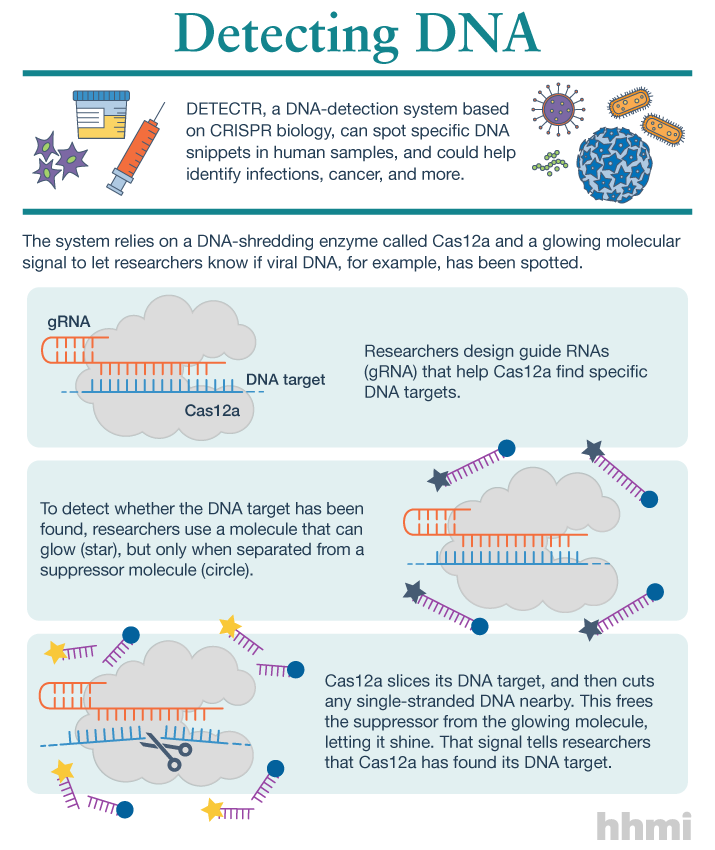
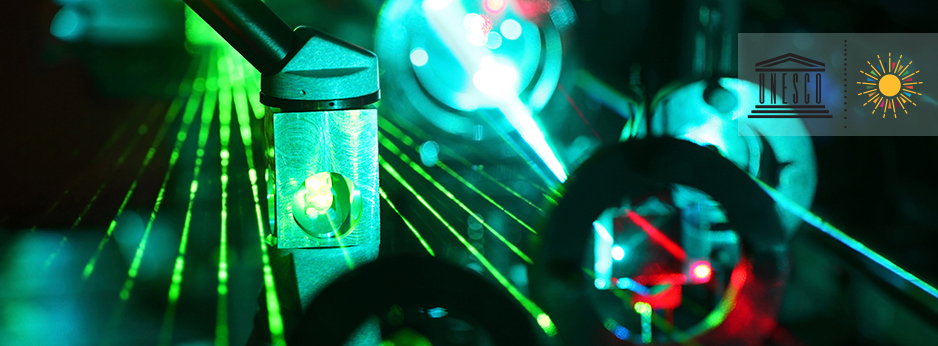
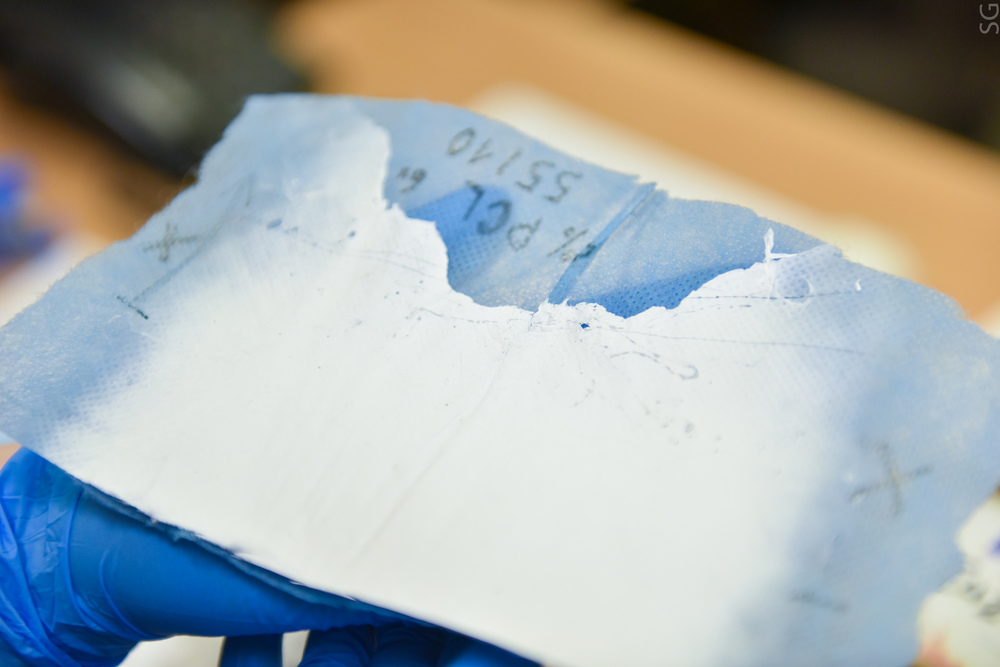
 Cheryl Hamilton is a conceptual artist with a penchant for visual ingenuity. A stickler for perfection, Cheryl imbues her design work with a kineticism inspired by her education as an animator at Vancouver’s Emily Carr Institute. Her recent training in the techniques of glass blowing at Alberta’s Red Deer College and Pilchuck Glass School coupled with her metal-working expertise now enable her to animate light and colour within her monumental steel structures. Cheryl also draws and paints and exhibits internationally. Her goal as an artist is to render an accessible beauty that withstands the test of time.
Cheryl Hamilton is a conceptual artist with a penchant for visual ingenuity. A stickler for perfection, Cheryl imbues her design work with a kineticism inspired by her education as an animator at Vancouver’s Emily Carr Institute. Her recent training in the techniques of glass blowing at Alberta’s Red Deer College and Pilchuck Glass School coupled with her metal-working expertise now enable her to animate light and colour within her monumental steel structures. Cheryl also draws and paints and exhibits internationally. Her goal as an artist is to render an accessible beauty that withstands the test of time. Artist Ele Willoughby is a modern Renaissance woman. After pursuing her doctorate in physics, she built her portfolio while working as an ocean-going marine geophysicist by day and printmaker by night. Her hand-pulled block prints reflect her love of science and the natural world with a hint of humour and whimsy. Many of her works focus on the history of science and scientists. She also makes interactive multimedia work, incorporating colour-changing or electrically conductive inks and electronics, which straddle the art/science divide. She lives and works in Toronto with her husband, and young son.
Artist Ele Willoughby is a modern Renaissance woman. After pursuing her doctorate in physics, she built her portfolio while working as an ocean-going marine geophysicist by day and printmaker by night. Her hand-pulled block prints reflect her love of science and the natural world with a hint of humour and whimsy. Many of her works focus on the history of science and scientists. She also makes interactive multimedia work, incorporating colour-changing or electrically conductive inks and electronics, which straddle the art/science divide. She lives and works in Toronto with her husband, and young son. Paige was born in Montreal Quebec where she had a competing passion for art and science. She chose to pursue science and graduated with a bachelor’s degree in Kinesiology. Upon graduation, she decided to follow her yearning to pursue art, specifically cartoons, and applied to the Art Fundamentals program at Sheridan College in Ontario. It was there that she developed a love for illustration. A professor told her that there were five specialized graduate programs in North America where she could combine her art skills with her passion for health and the human body. It took three years for her to polish her portfolio and finally get accepted into the Biomedical Visualization program at the University of Illinois at Chicago.
Paige was born in Montreal Quebec where she had a competing passion for art and science. She chose to pursue science and graduated with a bachelor’s degree in Kinesiology. Upon graduation, she decided to follow her yearning to pursue art, specifically cartoons, and applied to the Art Fundamentals program at Sheridan College in Ontario. It was there that she developed a love for illustration. A professor told her that there were five specialized graduate programs in North America where she could combine her art skills with her passion for health and the human body. It took three years for her to polish her portfolio and finally get accepted into the Biomedical Visualization program at the University of Illinois at Chicago.
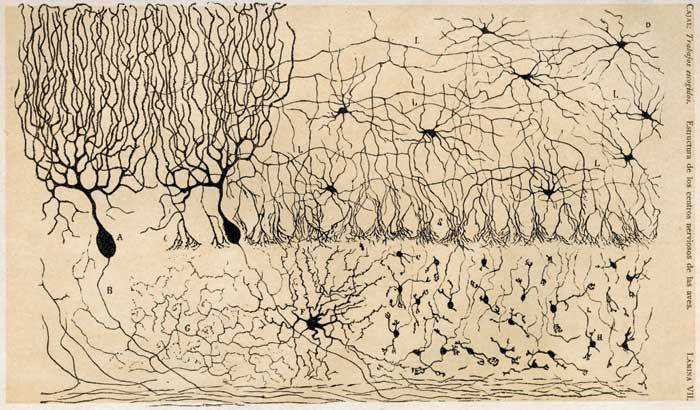
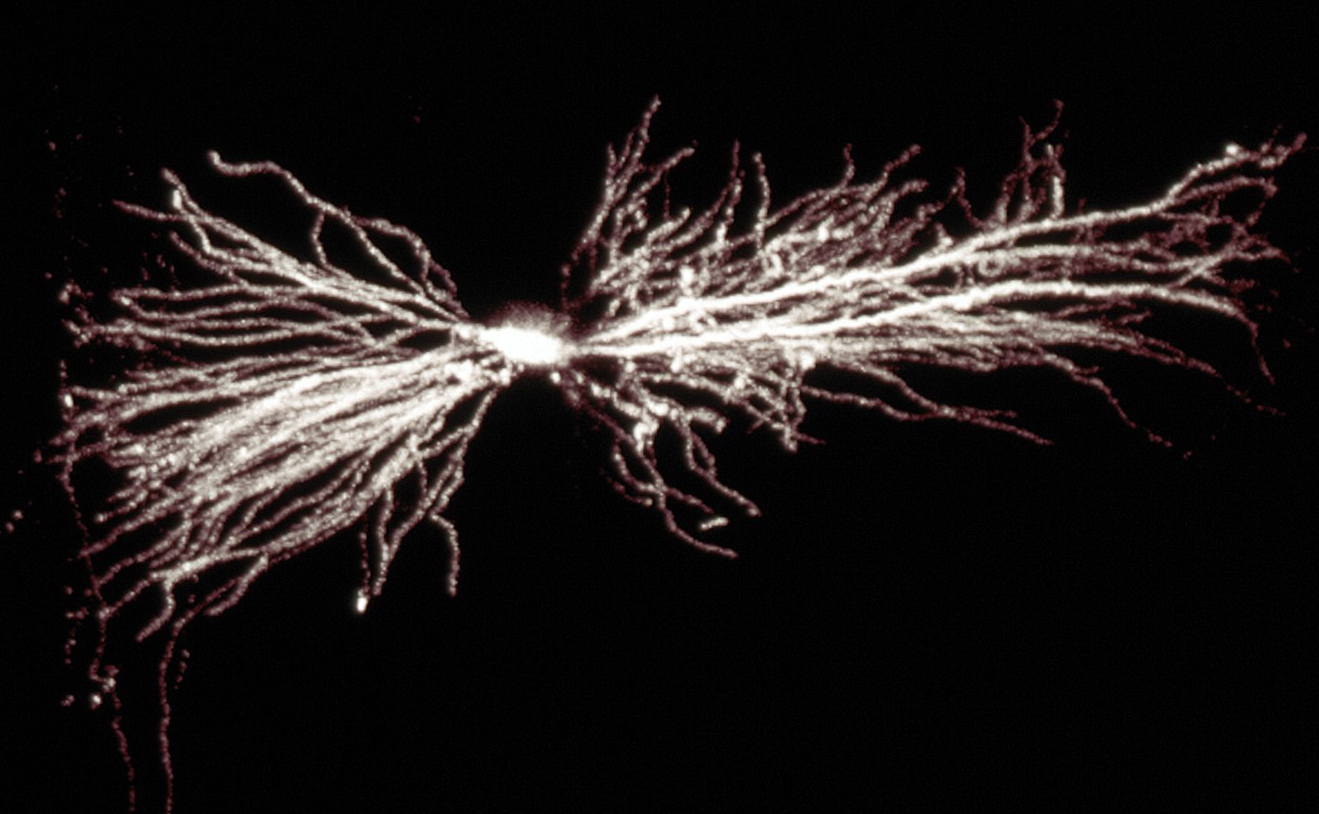 A hippocampal interneuron. Image: Biosciences Imaging Gp, Soton, Wellcome Trust via Creative Commons
A hippocampal interneuron. Image: Biosciences Imaging Gp, Soton, Wellcome Trust via Creative Commons